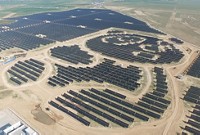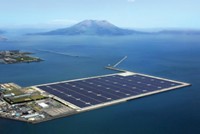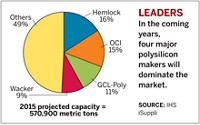Advertisement
Grab your lab coat. Let's get started
Welcome!
Welcome!
Create an account below to get 6 C&EN articles per month, receive newsletters and more - all free.
It seems this is your first time logging in online. Please enter the following information to continue.
As an ACS member you automatically get access to this site. All we need is few more details to create your reading experience.
Not you? Sign in with a different account.
Not you? Sign in with a different account.
ERROR 1
ERROR 1
ERROR 2
ERROR 2
ERROR 2
ERROR 2
ERROR 2
Password and Confirm password must match.
If you have an ACS member number, please enter it here so we can link this account to your membership. (optional)
ERROR 2
ACS values your privacy. By submitting your information, you are gaining access to C&EN and subscribing to our weekly newsletter. We use the information you provide to make your reading experience better, and we will never sell your data to third party members.
Business
Silicone Partners
Dow Corning and Wacker commission a large-scale basic silicones facility in China
by Jean-François Tremblay
December 6, 2010
| A version of this story appeared in
Volume 88, Issue 49

Global silicones rivals Dow Corning and Wacker Chemie teamed up in 2006 to build a world-scale complex in Zhangjiagang, in eastern China. Late last month, the two companies inaugurated their $1.8 billion facility—a huge, integrated complex producing siloxane and fumed silica, two major building blocks for the silicones industry.
“We’re here to support growing demand in China, a country where there is room for all the major silicone producers,” Stephanie A. Burns, chief executive officer of Dow Corning, told reporters at an inauguration event. The silicones market grows at a rate two to three times that of gross domestic product (GDP) in a developing country such as China, she noted. And Chinese GDP growth is on track to exceed 10% this year, according to the investment firm Morgan Stanley.
China accounts for 20% of Wacker’s global sales and 60% of its sales in Asia, said Rudolf Staudigl, the German firm’s president and CEO. “China is a region of huge importance for our business and continues to offer attractive future market opportunities,” he said at the inauguration.
It’s unusual for global rivals to jointly set up a manufacturing facility to make their core products. At the plant opening, executives explained that the two companies got together so they could afford a large, efficient raw materials facility that would enable them to make their own derivative products at a lower cost.
At the outset of the partnership, the two sides agreed that Dow Corning would have primary responsibility for designing and building the siloxane facility. Wacker would handle the plant producing fumed, or pyrogenic, silica. Although designed and built separately, the two facilities are highly interdependent. Not only do they share utilities, but the siloxane plant provides chlorosilane feedstock to the fumed-silica facility and the silica facility sends hydrogen chloride back to the siloxane plant.
Siloxane and fumed silica are used in a wide range of applications. Wacker has already started up several downstream facilities at the Zhangjiagang site, including silicone elastomers and sealants plants that started in 2007, a silicone emulsions facility that opened in 2008, and a silicone polymer and fluids plant that came on-line this year. Dow Corning also operates several silicone finishing plants in Zhangjiagang.
At the ceremony, Burns noted that the new complex would help alleviate a global silicones shortage that has been ongoing for several months. The extent of the pent-up demand appears to be significant. Although the Zhangjiagang complex will only be Dow Corning’s third large-scale siloxane facility in the world, it should be at full capacity and selling out its production slate within 18 months, according to Robert D. Hansen, who was recently named president of Dow Corning.
“Usually, demand isn’t so strong that we can bring a plant of this size to full capacity utilization so rapidly,” Burns commented. “This will obviously have great financial advantages for us.” Dow Corning, a joint venture of Dow Chemical and the glass manufacturer Corning, does not publish detailed financial results.
Despite requests by journalists present at the opening ceremony, neither Burns nor Staudigl would provide an estimate for silicone demand growth in China in the coming years. Staudigl said major users for silicone products are found in the automotive, construction, electronics, and alternative energy sectors, industries that often experience rapid twists of fortune. For example, he noted, demand for photovoltaic solar cells depends on subsidies provided unpredictably by governments around the world.
Looking at silicone markets geographically, Burns emphasized that emerging countries, China in particular, are growing fast now. In an economic forecast last month, Morgan Stanley estimated that Chinese private-sector consumption will grow 10.0% in 2011, up from an estimated 9.8% in 2010. The construction sector will remain buoyant next year, the investment bank predicted, and Chinese real estate investment will grow 16%, representing a slight deceleration from the heady 21% growth under way this year.
To take advantage of opportunities in Asia, both Wacker and Dow Corning are boosting R&D spending in China. In the Zhangjiang Hi-Tech Park, in Shanghai, Dow Corning took over a huge R&D facility that previously belonged to Rohm and Haas, which Dow Chemical acquired last year. Wacker has technical centers in Shanghai and Beijing.
Dow Corning is not in China because it’s cheaper to do business there, Hansen insisted. In fact, in recent months, he pointed out, the cost of building large-scale chemical plants in China has risen and now tops the cost of building them on the U.S. Gulf Coast.





Join the conversation
Contact the reporter
Submit a Letter to the Editor for publication
Engage with us on Twitter